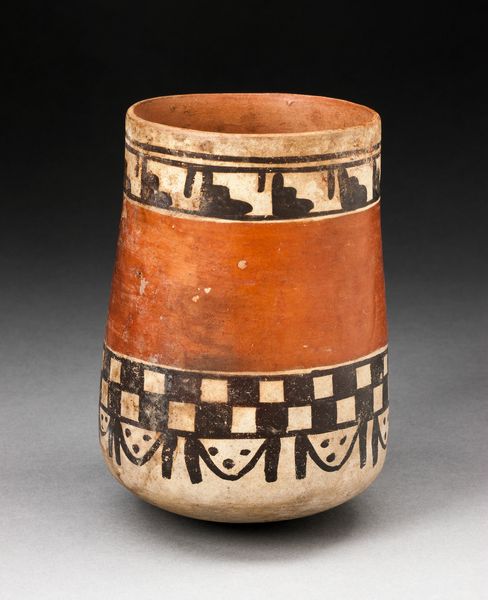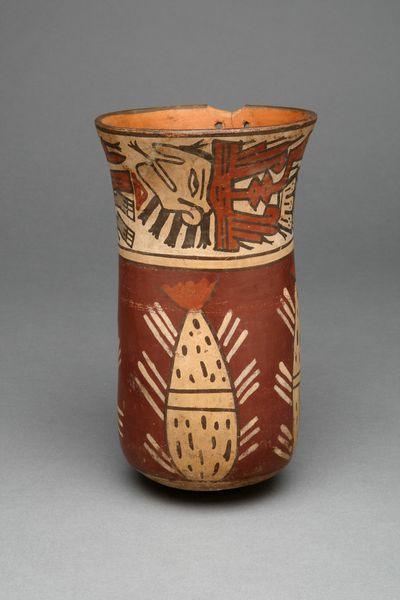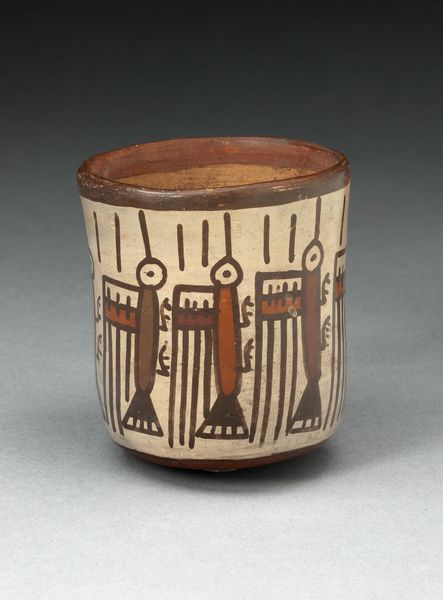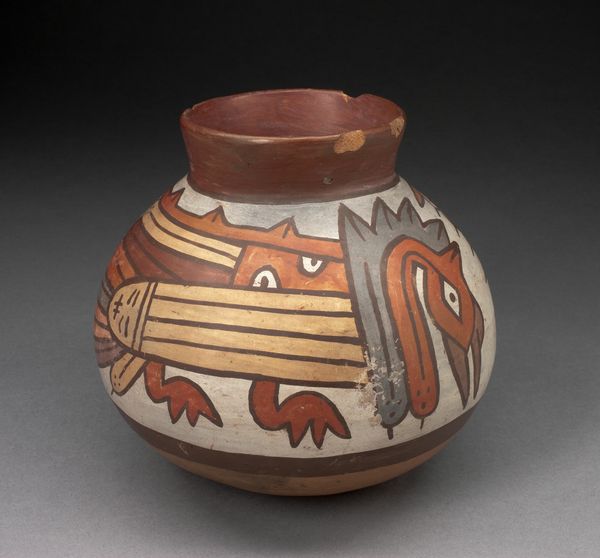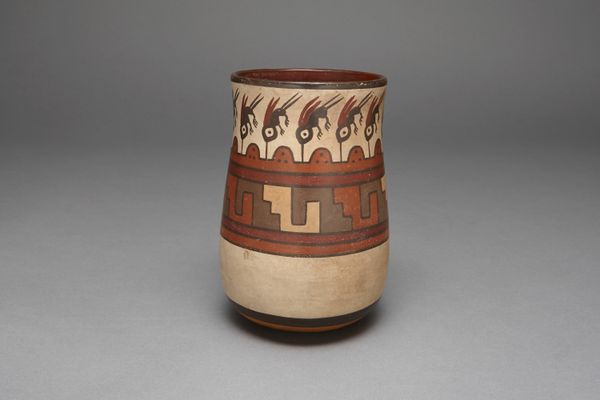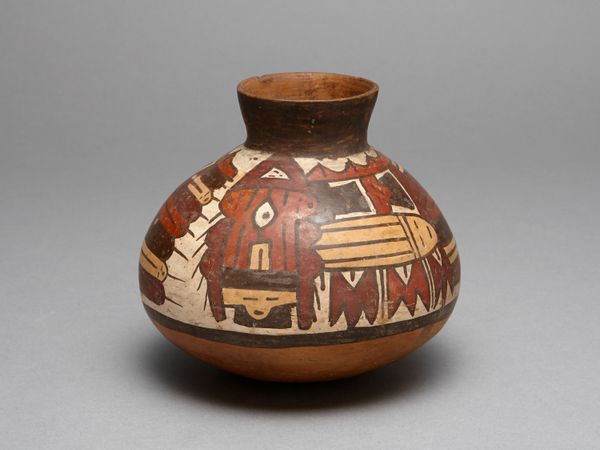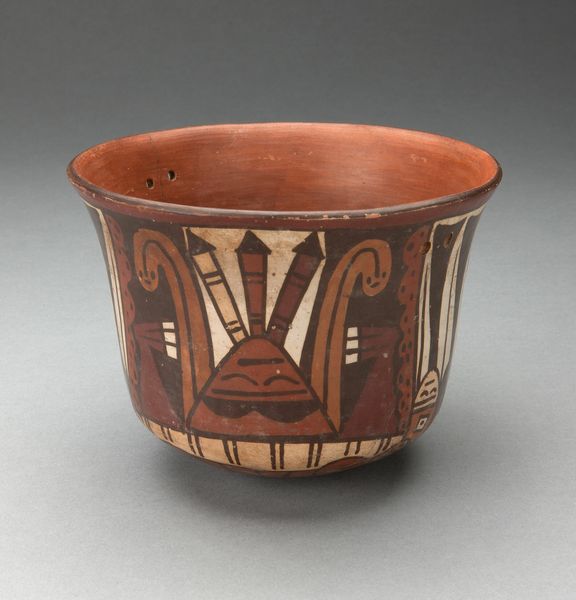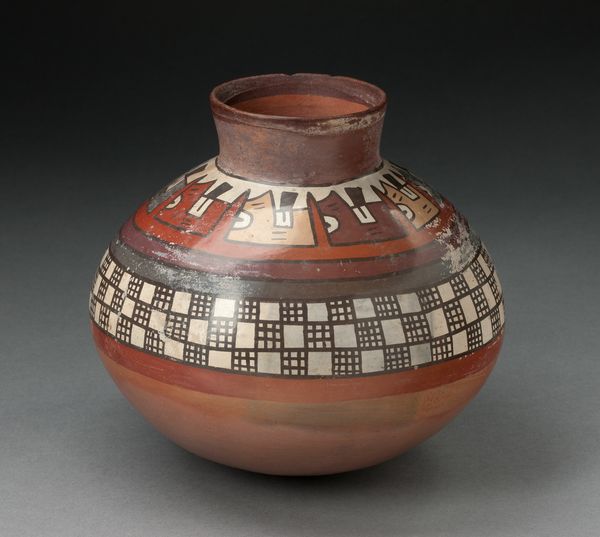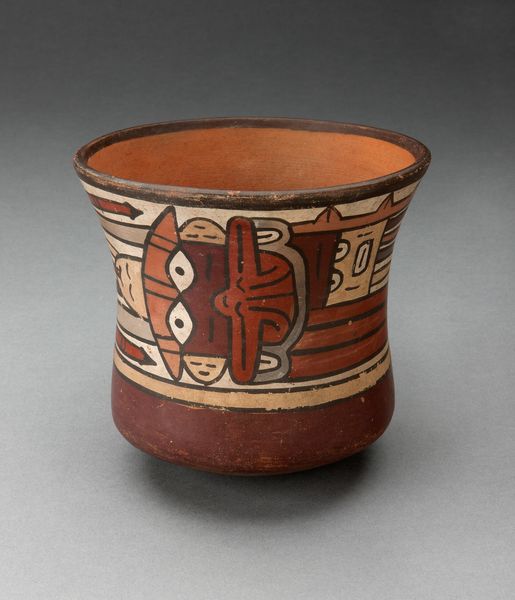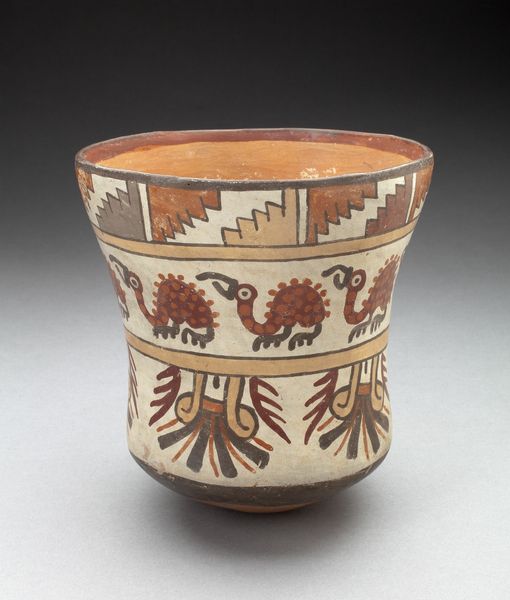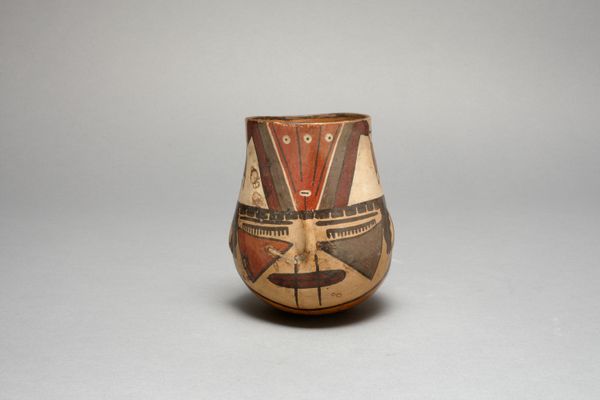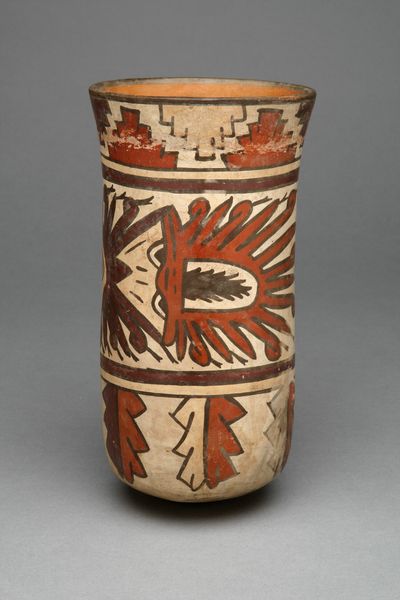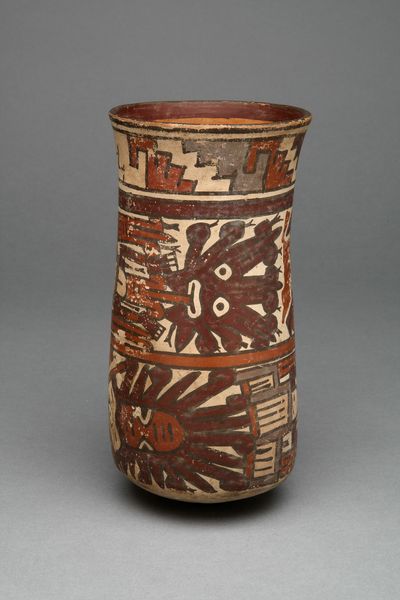
Beaker Depicting Paired Inverted Human Heads, Likely Trophy Heads c. 180 - 500
0:00
0:00
ceramic
#
pottery
#
ceramic
#
figuration
#
food illustration
#
ceramic
#
indigenous-americas
Dimensions: 14.9 × 11.1 cm (5 7/8 × 4 3/8 in.)
Copyright: Public Domain
Editor: This ceramic beaker, dating from around 180 to 500 AD and attributed to the Nazca culture, depicts two rather stylized, inverted human heads. They almost resemble abstracted faces. There’s something about their presentation that's unsettling. What can you tell us about this piece and the context it comes from? Curator: It's certainly striking. What we’re seeing are likely trophy heads, powerful symbols within the Nazca culture. Consider the social structures of the time. Warfare and ritual violence were deeply embedded in their society, influencing both the creation and the reception of these images. How might the public consumption of this imagery reinforce or challenge existing power dynamics? Editor: I guess displaying such a potent image on an everyday object implies it was integrated into the cultural consciousness, maybe even desensitizing people to violence? Or celebrating their victories in war? Curator: Exactly. Think about the museum itself displaying this now, far removed from its original cultural context. How does its meaning shift? Is it an artifact? A historical document? Does displaying it potentially perpetuate harmful historical narratives? Editor: That’s a complicated question! On one hand, we preserve a piece of history, but we have to remember what it stood for in its original context. Also it may be viewed through contemporary sensibility? It really challenges our assumptions. Curator: Precisely. And what responsibilities do museums have in navigating these challenging dialogues and histories, as this ceramic traveled all the way here in the Art Institute of Chicago? Editor: That really highlights how context is everything. Thank you for shedding light on it, especially on the complex intersection of power and art.
Comments
No comments
Be the first to comment and join the conversation on the ultimate creative platform.
